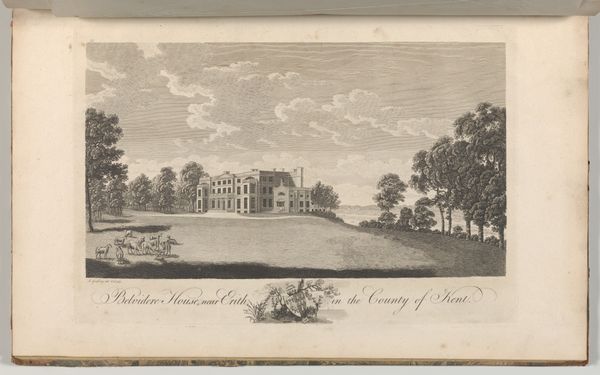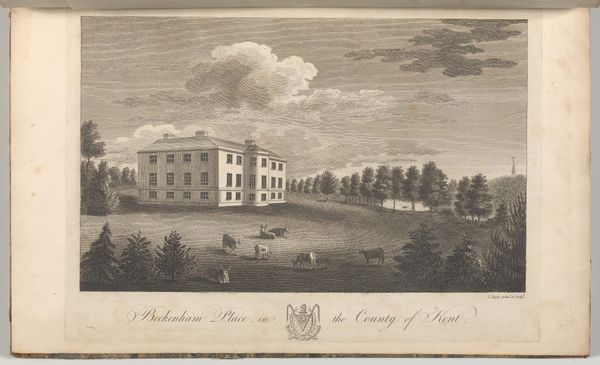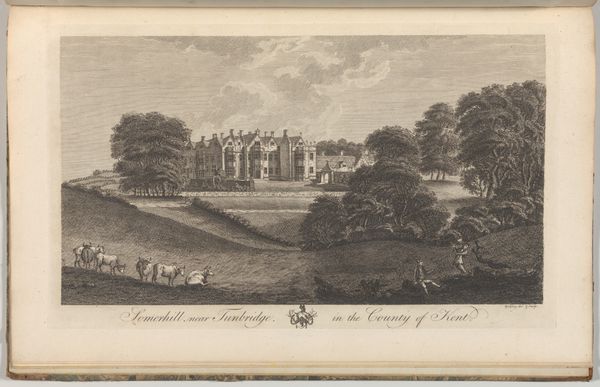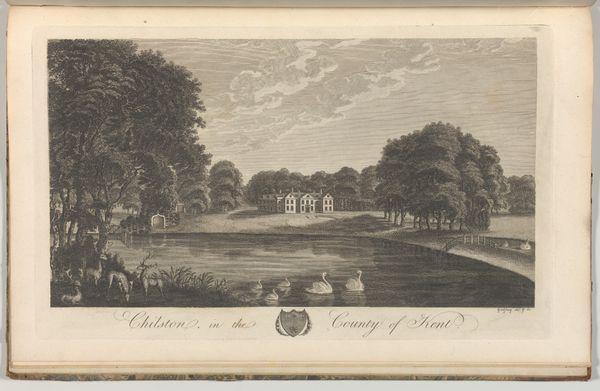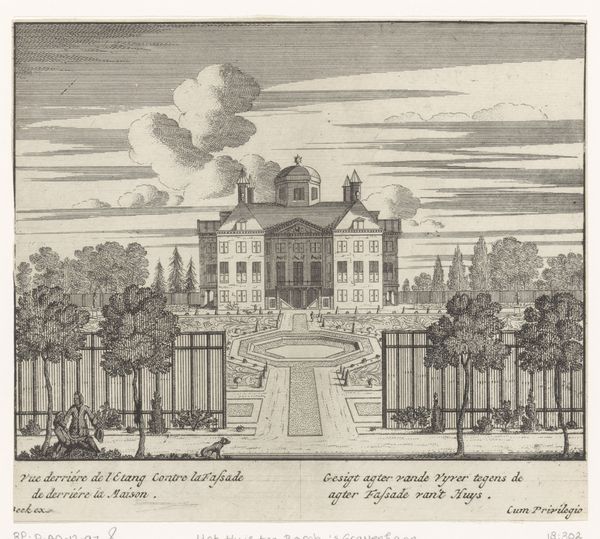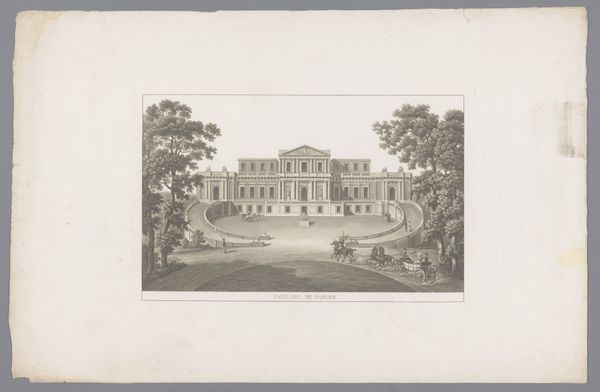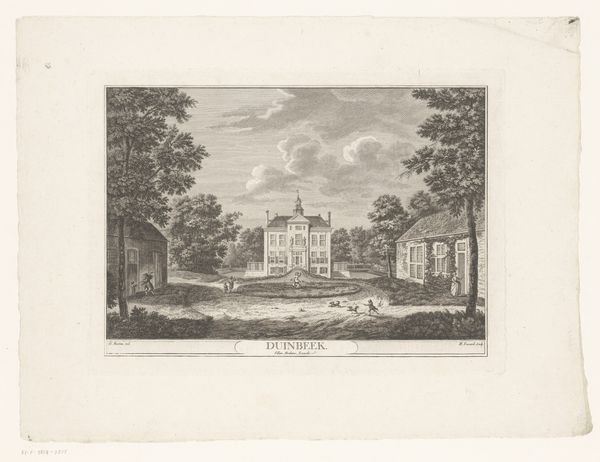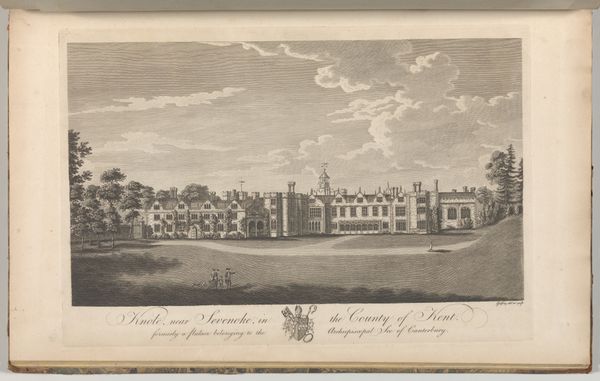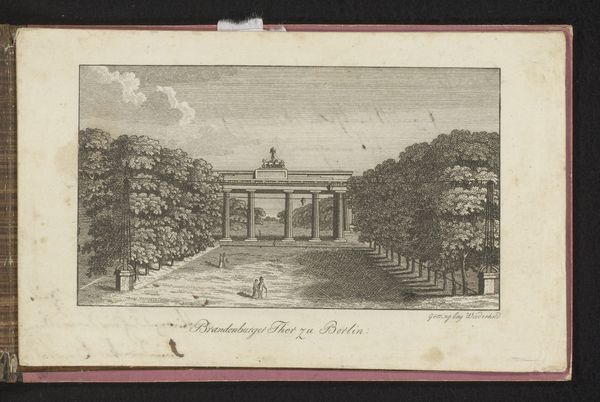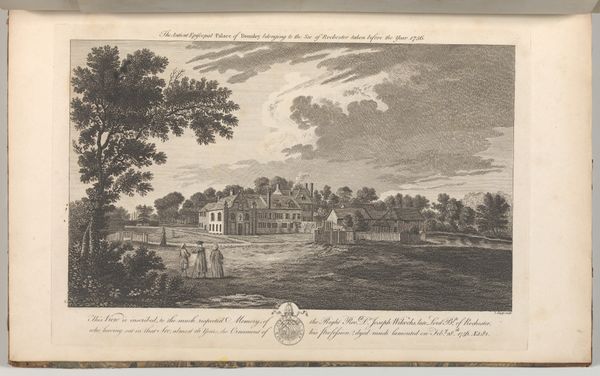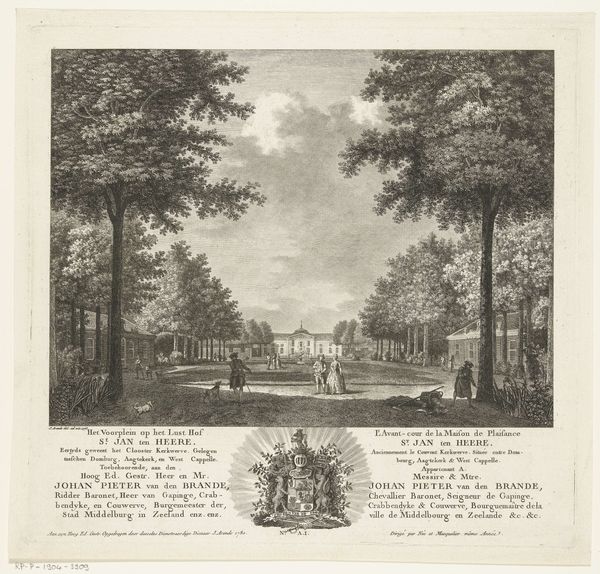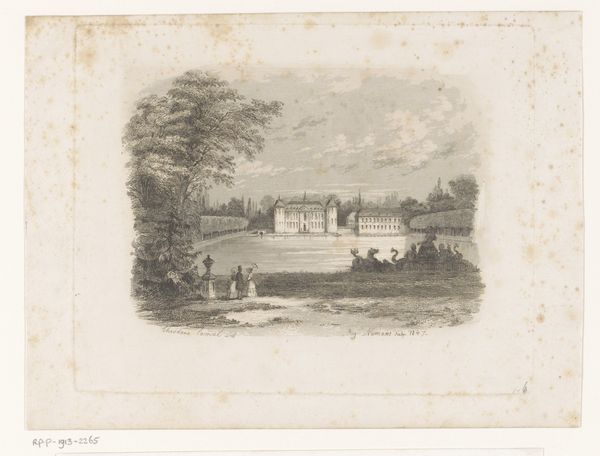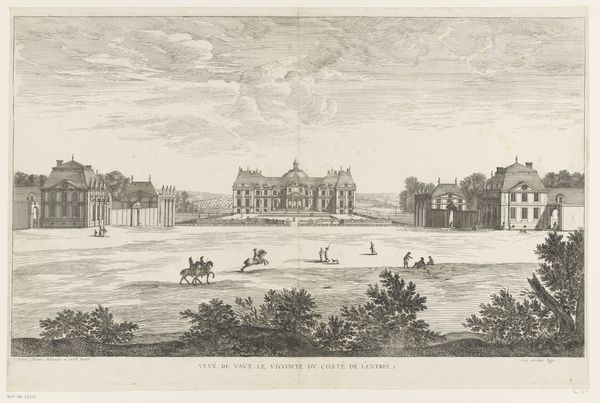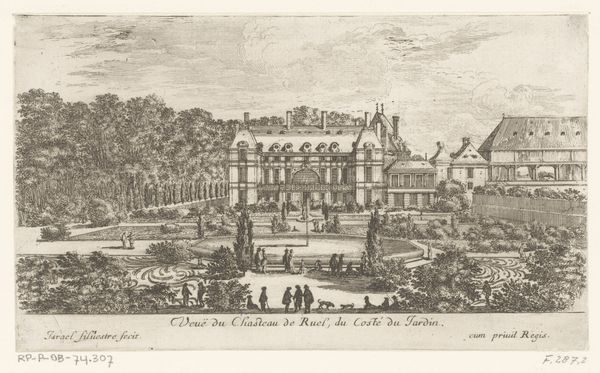
Langley Park, near Beckenham in Kent, from Edward Hasted's, The History and Topographical Survey of the County of Kent, vols. 1-3 1776
0:00
0:00
drawing, print, engraving
#
drawing
#
neoclacissism
# print
#
landscape
#
15_18th-century
#
cityscape
#
academic-art
#
engraving
Dimensions: Book: 17 5/16 × 11 × 13/16 in. (44 × 28 × 2 cm) Sheet: 16 15/16 × 10 5/8 in. (43 × 27 cm) Plate: 10 1/16 × 14 in. (25.5 × 35.5 cm)
Copyright: Public Domain
Curator: Welcome. Before us is Richard Bernard Godfrey's engraving, "Langley Park, near Beckenham in Kent," dating back to 1776. It's featured in Edward Hasted's, "The History and Topographical Survey of the County of Kent." Editor: Mmm, my first thought? Restrained grandeur. Very… measured. It feels like looking at a stage set, carefully arranged, everything in its proper place. Like the deer that graze nonchalantly in front of the Langley house: almost artificial in their elegance. It's too perfect, no? Curator: The print embodies the Neoclassical aesthetics prevalent during the 18th century, aiming for order and reason. Note how Godfrey positions Langley Park within a broader historical and social context, emphasizing the owner’s status. It's less about the landscape, but rather a political document, subtly praising ownership and progress. Editor: A document? Maybe... Look at those precisely placed trees lining the avenue... Like meticulously arranged columns guiding your gaze towards the great house. Everything screams "power", yet… it is also all slightly boring and expected! No true surprises. Just social affirmation... but with better trees than a modern day photo opportunity. Curator: Absolutely, it reflects how art was used to solidify the socio-political hierarchy of the time. It shows how country estates like Langley Park played a central role in Britain’s economic and political structure. The placement within the published book also reinforced this agenda to a specific readership. Editor: I get that. But, for me, knowing that a house looked a specific way, at a moment in time, I like that sort of visual record. Even in all its carefully cultivated pomp. It almost becomes evidence… like a fly trapped in amber. A frozen moment that says more, perhaps, than was ever intended. It invites the question what sort of daily dramas went on for real behind those closed doors... beyond what we know. Curator: And perhaps that invitation to look beyond the surface is the enduring value of such images. Editor: Exactly! The art that invites you to do some archeology on what you are seeing, that has my attention!
Comments
No comments
Be the first to comment and join the conversation on the ultimate creative platform.
